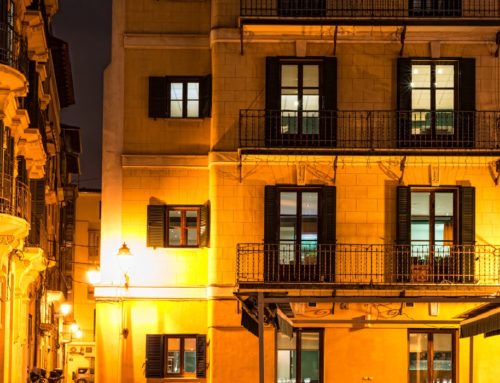Intro. The residential real property market has been active recently for rental houses and principal residences It is perhaps for this reason that I have received several inquiries about the use of IRC Section 121 to exclude gain, the use of IRC Section 1031 to defer gain, and the potential use of both sections in a single transaction. This short post will provide a brief review of how each of those sections work, and how they can be used together.
Section 121. Section 121(a) provides that a taxpayer may exclude gain realized on the sale or exchange of property if the property was owned and used as the taxpayer’s principal residence for at least 2 years during the 5-year period ending on the date of the sale or exchange. Section 121(b) provides generally that the amount of the exclusion is limited to $250,000 ($500,000 for married couples filing joint returns).
Section 1031. Section 1031(a) provides that no gain or loss is recognized on the exchange of real property held for productive use in a trade or business or for investment (relinquished property) if the real property is exchanged solely for real property of like kind (replacement property) that is to be held either for productive use in a trade or business or for investment.
Application of both Sections 121 and 1031—Revenue Procedure 2005-14. In 2005, the IRS promulgated Revenue Procedure 2005-14, which described ways in which a taxpayer could use both Section 121 and Section 1031 in the same real property sale transaction. For both sections to apply, the relinquished property must have been a principal residence of the seller for the requisite two year period, and the property must also have been held at least in part for investment. How can both requirements be met for the same residential property? Both requisites would be true, for example, if the relinquished property had been used as the taxpayer’s principal residence in years 1 through 3, and then held as a rental property in years 4 and 5. The property would be held for investment at the time of the sale for purposes of Section 1031, but would also have been used as the taxpayer’s principal residence for at least 2 of the 5 years preceding the sale.
Rev. Proc. 2005-14 lays down the following rules for applying both sections:
- Section 121 must be applied to realized gain before applying Section 1031.
- Section 121 does not allow the exclusion of gain which is the result of depreciation recapture; but Section 1031 allows the deferral of such gain.
- Under Section 1031, gain must be recognized in the amount of “boot” (non-like-kind property) received. But this gain is excluded under Section 121, so gain is recognized only to the extent the amount of boot received exceeds the Section 121 exclusion amount.
- Under Section 1031, the tax basis of the relinquished property is transferred to and becomes the basis of the replacement property, but is increased by any gain recognized. Gain excluded under Section 121 is treated as gain recognized, and added to the basis of the replacement property.
Example. A taxpayer purchases a house on 1/1/2004 for $200,000 and uses it for her principal residence. On 1/1/2017 she moves out and converts the house to a rental property. On 1/1/19 she sells the house for $500,000 and completes a 1031 exchange in which she purchases replacement property for $480,000, and receives the remaining $20,000 in cash. Assuming that her basis in the house at the time of sale was $200,000:
- She will have $300,000 of realized gain.
- She will exclude the first $250,000 of gain under Section 121.
- She will defer the remaining $50,000 of gain by completing a 1031 exchange.
- She will receive $20,000 of taxable boot in connection with her 1031 exchange, but she will not recognize any gain because the amount of boot does not exceed her Section 121 exclusion amount.
- Her basis in her replacement property will be $450,000: e., the transferred basis of $200,000, plus the $250,000 of gain excluded under Section 121.
A couple of other ways that Sections 121 and 1031 interact:
The use of Section 1031 in the original acquisition of the property creates a limitation on the use of Section 121. Section 121(d)(10) provides that, if property is originally acquired in a 1031 exchange, a taxpayer must wait a minimum of 5 years before taking advantage of Section 121 in a sale of such property.
Depreciation recapture under Section 1245 and 1250 generally cannot be excluded under Section 121. But, depreciation recapture can sometimes be deferred in a 1031 exchange provided that the replacement property consists of 1245 or 1250 property.






